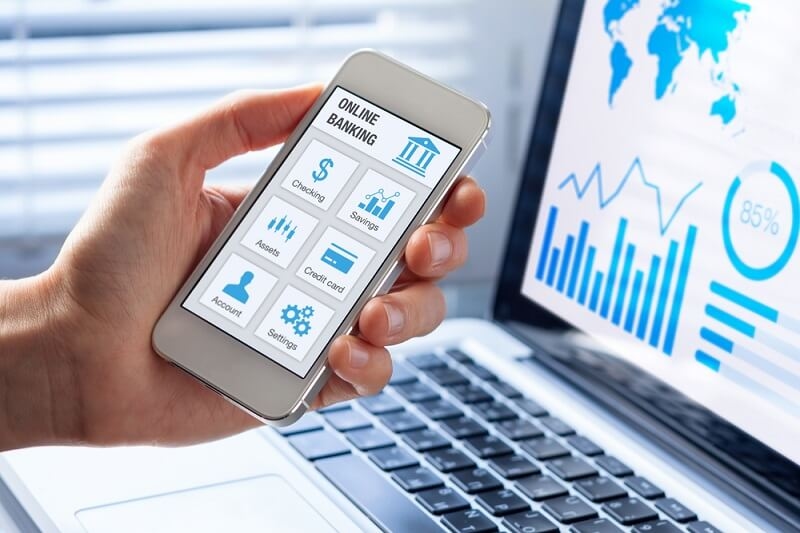
In today's fast-paced and always-connected world, using your finances online isn’t an option; it’s necessary. With mobile apps and automated alerts, digital banking provides everything you need to manage your money within a spectrum of functions and services. However, with this convenience of online banking, you must be responsible. Suppose you do not actively monitor and are unaware of your online checking and savings accounts, but do so safely. In that case, you could be subjecting yourself to fraud, identity theft, or making inferior financial decisions.
This guide will walk you through the best practices for monitoring and managing your online checking and savings accounts safely and securely. We will illustrate the critical strategies, tools, and safeguards you can implement to enable you to take ownership of your money while reducing your risk.
As banking continues to change, paper statements and visits to a bank branch are becoming a thing of the past. More Americans are turning to digital platforms to manage their everyday financial chores. According to several surveys (not using real-time data here), most U.S. adults use online and mobile banking at least once weekly.
Whether you’re watching daily spending, scheduling automatic payments, or building a new nest egg, online account management tools ensure you can manage your money on your schedule.
However, accessibility can pose a risk. If you're not careful, you can easily fall victim to a data breach, phishing scam, or weak passwords that leave you financially vulnerable.
One of the easiest ways to protect your finances is to set up balance alerts for your online accounts. These alerts can notify you when your account exceeds a certain amount or when large withdrawals occur.
Best practice:
Always choose real-time mobile push notifications or SMS alerts instead of emails for a quicker response.
Most banks in the U.S. have multiple U.S. checking account digital tools available at no added cost to you, made specifically to help you see everything in one place. These digital tools are perfect for people who want to manage their overall financial status with a bird’s-eye overview without logging in several times daily.
Pro Tip:
Choose biometric log-in and 2-factor authentication (2FA) platforms when using digital tools.
Your online banking security is only as strong as your weakest device. When accessing your bank through a smartphone, tablet, or laptop, follow these online account management best practices:
Bonus Tip:
Enable notifications for logins from new devices. This helps you track any unauthorized access attempts in real time.

The best defense is early detection. You can spot inconsistencies, unauthorized charges, or forgotten subscriptions by routinely logging in and reviewing your transactions.
Routine tip: Could you set a weekly reminder to review your online checking and savings accounts every Sunday evening or Monday morning?
Managing online checking accounts efficiently is only one side of the coin. Learning how to manage online savings securely requires a slightly different strategy. Your savings account should be less accessible than your checking account to discourage unnecessary withdrawals.
Tip for security:
Choose banks that require re-authentication to move money out of savings.
Too many bank accounts, apps, and tools can lead to disorganization and increase your vulnerability. Streamlining your digital financial setup is crucial.
Outcome:
A tidy, smart device setup helps ensure you only manage what matters, reducing your mental load and digital risk.
Knowing how to respond quickly can make all the difference, whether it’s a phishing email, malware, or a data breach. Here are critical steps to safeguard your online bank balances:
Emergency Prep:
Keep your bank’s fraud hotline number in your contacts if you need to act fast.
Not all banks are created equal regarding digital security and features. Choosing a provider that prioritizes online account management best practices gives you an extra layer of assurance.
Tip:
Read user reviews not just for features, but also for how the bank handles fraud claims and support requests.
It might sound old-school, but reconciling your monthly bank statement with your records is smart. Discrepancies can go unnoticed when you only rely on apps or glance at your balance.
Helpful habit:
Print a PDF of your monthly statement, highlight unfamiliar items, and match each to your receipts or transaction history.
If you share your checking or savings accounts with a partner or family member, you’ll need an extra layer of coordination and security.
Safety reminder:
If you split or dissolve financial ties, immediately update your login info, cancel joint cards, and monitor for any new activity.
Everyone can learn how to have a successful ongoing practice of monitoring and managing their online checking and savings accounts securely. Because cyber threats continue to evolve and banks and financial institutions constantly add features, it is wise for you to maintain vigilance and awareness.
You can take control of your financial future without sacrificing your peace of mind by using balance alerts, digital resources, strong authentication, and good organization management.
Whether you manage online checking accounts for your daily spending or are learning how to manage online savings safely for your long-term plans, your intention to manage your accounts wisely and safely will last many years.
This content was created by AI